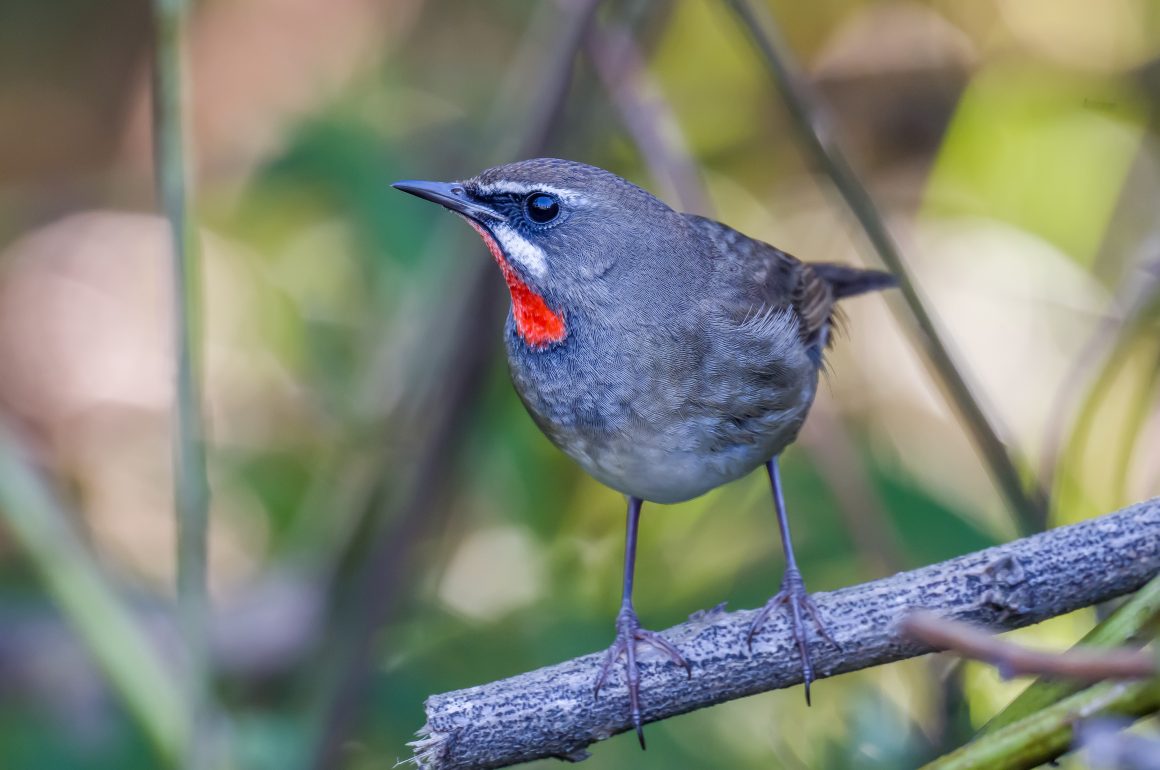
The Siberian Rubythroat passes through Shanghai on its autumn migration, mainly in October and November. Its Latin name, Calliope calliope, is derived from Calliope, the chief of the Greek muses. Apparently, she was both the wisest and the most assertive of the muses. She also must have had something of a mean streak – after defeating the daughters of the king of Thessaly in a singing contest, she punished them by turning them into magpies.
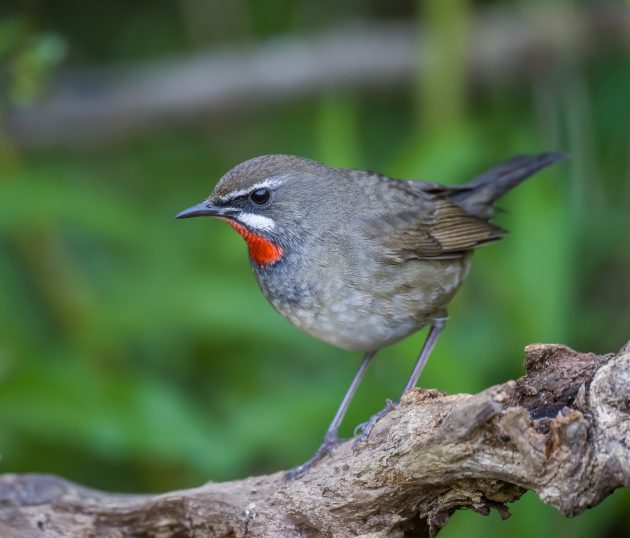
eBird seems to be a fan of the species, calling it a perky, long-legged songbird” with a “variable melodic song consist[ing] of beautiful warbling and occasional mimicry”.
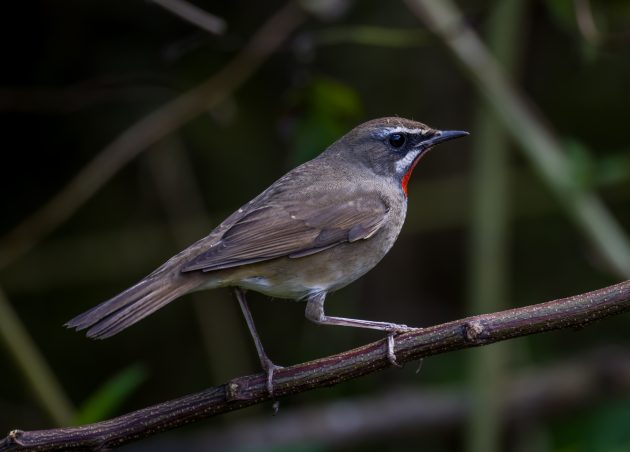
However, eBird errs stating that “younger male may have a hint of red, while female lacks red” – though most birders indeed think this is true, females sometimes have a reddish throat (like a carelessly applied lipstick), as described in the rather detailed book “Ageing & Sexing of Migratory East Asian Passerines”, which surprisingly only reaches #4,310,956 in the Amazon Ranking of Best Selling Books, despite being a bargain at USD 107 (money well spent, if you ask me).
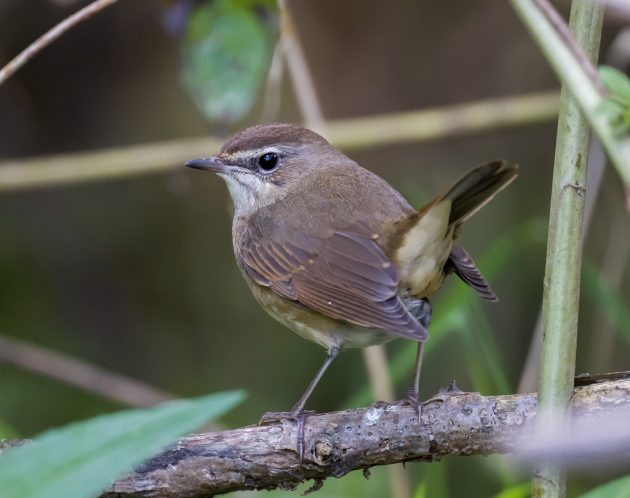
A few photos of the female
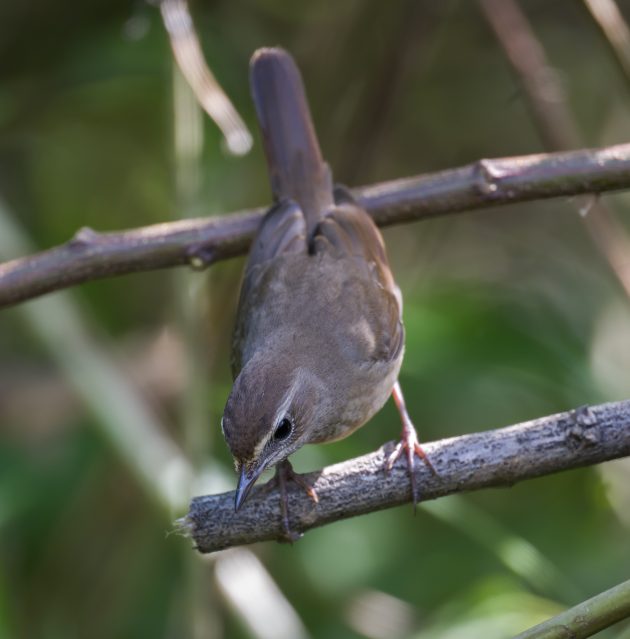
Indeed, another source also states that neither size nor color of the red throat patch or the bordering sub-malar stripes are reliable field marks for sexing Siberian Rubythroats.
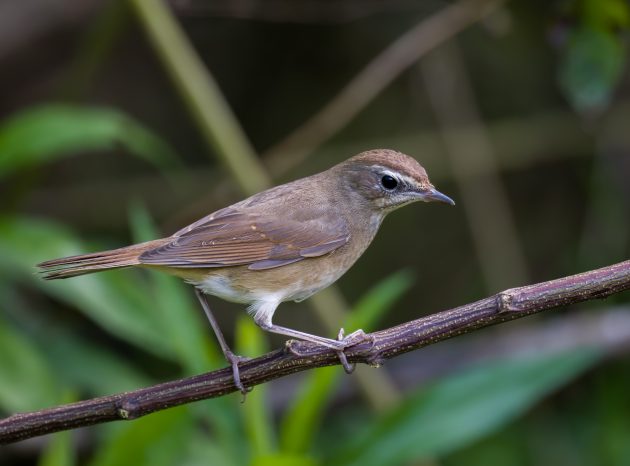
The Siberian Rubythroat seems to somewhat lack a proper inbuilt GPS system – while it breeds as far west as the Ural Mountains and winters as far est as Central India, it does not migrate through central Asia in large numbers (even though this would be the shortest way). Rather, during autumn migration, it first flies to east Siberia, then turns south across eastern China, and finally turns west (source: Birds of Two Worlds: The Ecology and Evolution of Migration).
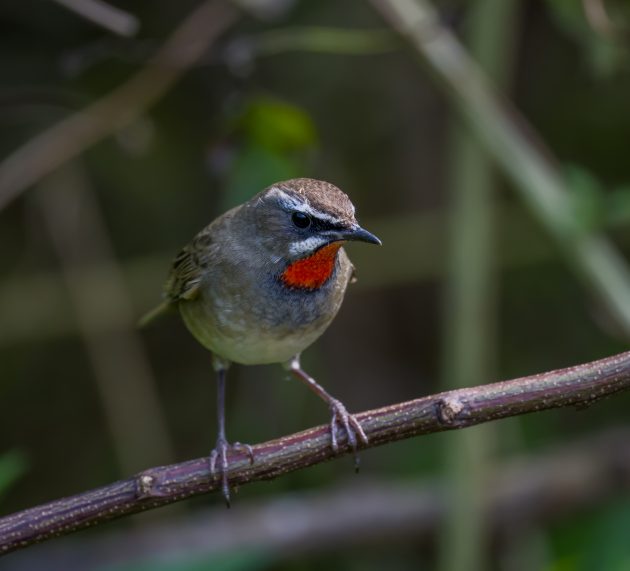
It also seems that different populations of rubythroats use different and specific routes, a phenomenon that is apparently called “migratory connectivity” and that is relatively uncommon among long-distance migrants. Birds breeding in mainland East Russia migrate through mainland China and spend the winter in South-East Asia, while birds ringed in Japan and easternmost Russia were mainly found wintering in Taiwan and the Philippines (source). There is also another study also looking at the migration routes of Siberian Rubythroats based on light-level-based geolocation.
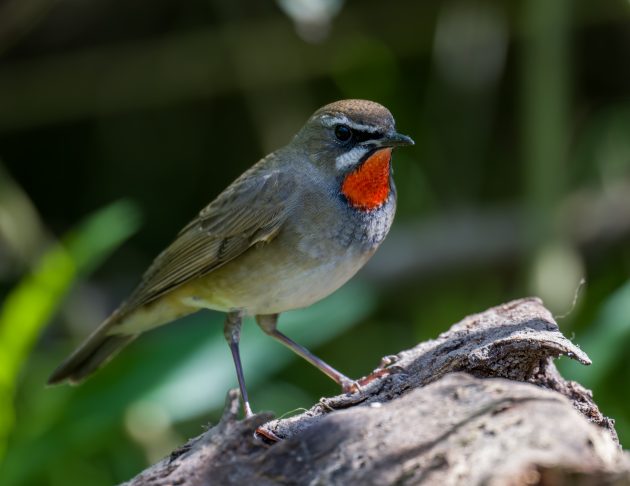
Other fun things that researchers have done with Siberian Rubythroats include investigating their response to light of different wavelengths. They found that the visible light sensitivity of Siberian Rubythroat was the highest for the 478 nm turquoise and decreased towards the 622 nm red, though I am not quite sure if this is particularly relevant information.
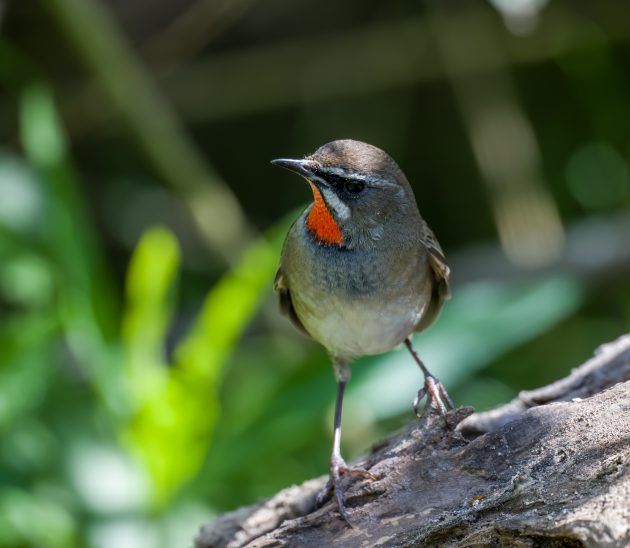
Similarly, I am not quite sure what to make of the information that the wing length of rubythroats trapped in Hong Kong became shorter between 1985 and 2020 (source) – my guess is that either global warming or Donald Trump should be responsible.
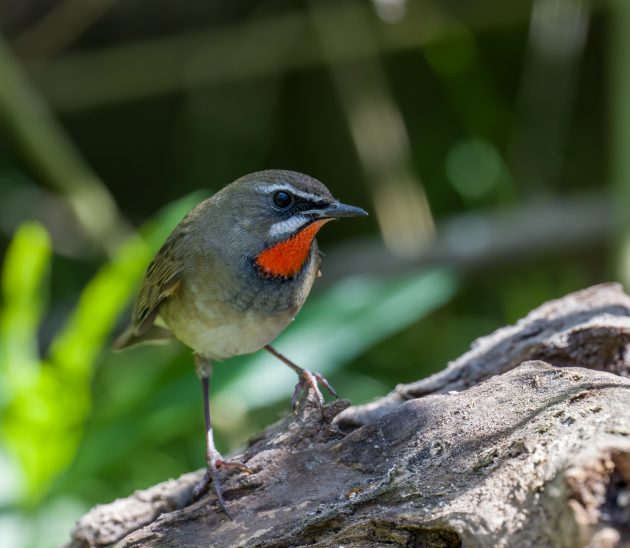
The song of the Siberian Rubythroat is rather interesting and occasionally sounds almost jazzy to me (not usually a compliment coming from me, but in this context, it is). A paper on this also describes the song of the species as extremely complex and variable. The paper gives a lot more detail on its song: “This species sings predominantly discontinuously, but the duration of individual songs varies significantly. Each individual song is composed of a number of song units, a stereotypical set of different notes and syllables that are always presented together and in a strictly fixed order.”
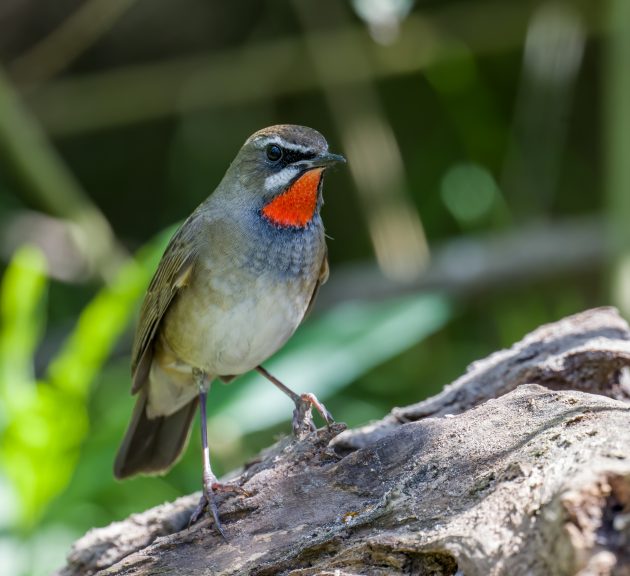
The foraging behavior of the rubythroat is described as a “complex exploration of dense vegetation thickets” (source), particularly compared to some of its closest relatives such as the Rufous-tailed Robin, the Siberian Blue Robin, and the Bluethroat.
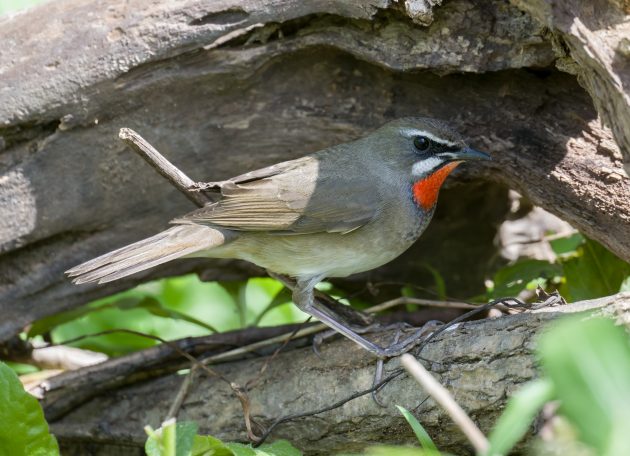
While birders generally are very happy to see Siberian Rubythroats, there could also be the risk of them spreading diseases. A study found that Siberian Rubythroats breeding in Siberia and Russia and wintering in Southeast Asia carry both tick-borne encephalitis virus and some borrelia species. So better not let a rubythroat bite you.
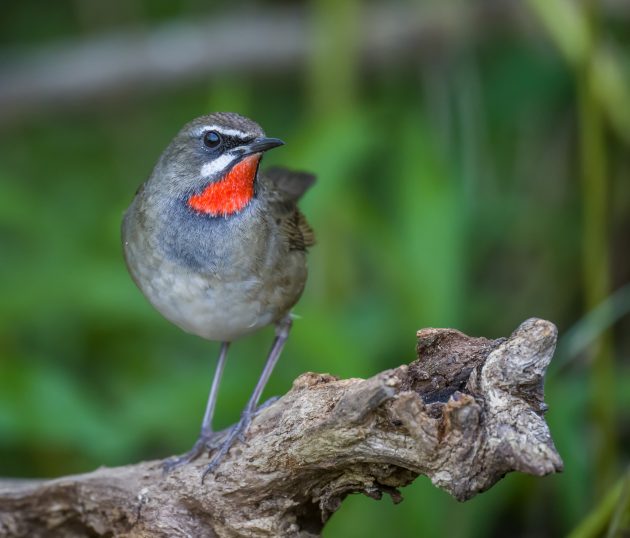













Wow, educational and beautiful post, Kai. I’ve been fortunate to see Siberian Rubythroat in India (where they skulked)and Doi Lang, Thailand, (where you can get great photographic shots at a feeding station). I did not know all this other fascinating stuff about them, especially the confusion about male & female identification point.
Thanks, Donna! I